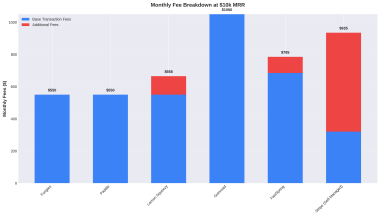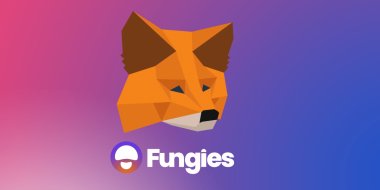It all started with Bitcoin. Then came blockchain, cryptocurrencies, crypto industry, NFTs, and now everyone seems to be talking about web3. Are those only buzzwords, or is there more to it? What the heck is this web3, and how it’s connected with blockchain and crypto?
This post is here to help you start the journey on the unknown waters of the emerging web3 technology. Excuse us for not talking more about its origin, which is blockchain and crypto. If you are hungry for knowledge, please check our partner’s blog, where you can find a comprehensive history of NFTs.
The Internet = The Change
Some say that web3 is the future of the Internet. In fact, this assumption is present in the very name of the concept. But, how come? Does the internet change at all?
The internet is created by people and for people. And, of course, the emergence of the world wide web was a tremendous change for the entire world. It affected every area of human life, transforming the way we do things. Yet, it doesn’t mean that the internet itself doesn’t evolve. One can safely state that it is not excluded from the universal law of nature that “everything flows.”
Still not convinced? Let’s take a quick tour through the history of the internet.
The History of WWW
Although in 2022 it’s hard to imagine the world without the Internet, it’s only been around for about 30 years. Since its emergence in the 1990s, it has gone through two significant phases. First, there was so-called web 1.0. Later, due to many different factors, we experienced the shift from web 1.0 to web 2.0. We will briefly discuss those factors in the following paragraphs. Right now, we are facing the second major shift: from web 2.0 to web3. What changed, and what is likely to change next?
Web 1.0 – The Beginning
Until the era of Web 2.0, Web 1.0 didn’t have its own name. It was referred to as the early days of the Internet or just the Internet as it was hard to imagine it any other way. During this stage, the Internet was very similar to traditional broadcasting media. There were a few creators, and most users just consumed the content. Bandwidth and server performance were of critical importance. Hence, early websites were visually obscure, consisting mainly of text sprinkled with a few small images.
In the 1990s, not everyone was aware of the importance of the new medium. There were quite a few voices considering the Internet to be a fad that will soon be over. And the Internet users were described as tech-savvy elite. A niche audience.
The Good
Was there anything good about Web 1.0? Why is seems to be missed by so many early adopters? The main quality of Web 1.0 was the anonymity of the users. It was even illustrated by the famous New Yorker cartoon by Peter Steiner. The sense of security provided by this feature fostered discussions on every possible topic. And apparently, the users were indeed the tech-savvy elite, so the conversations differed from those we can see now.
Web 1.0 was not heavily monetized. It was believed to be the place of true freedom and independence. The place where great ideas can be born.
The Bad
The first thing that comes to mind when thinking about what was bad about Web 1.0 – it was the ugly incarnation of the Internet. Due to limited bandwidth, designers had little place to show off their skills. Plus, being an entirely new medium, the Internet didn’t have any rules of good conduct in terms of the websites’ look.
But more importantly, despite being advertised as a very democratic place, there were only few people creating the content. With the growing number of users, the need for wider participation became evident starting the discussion about the revolution dubbed web 2.0.
Web 2.0 – The Participation
As stated in the previous paragraph, the main argument for implementing web 2.0 was the need for wider participation. With its journey towards web 2.0, the Internet was becoming more and more mainstream. At our team, we remember the ongoing debate about the emergence of web 2.0 and the shape it could get. There were voices stating the change is inevitable and those claiming it will never happen. And then, one day, we woke up, and the discussion was gone. Web 2.0 became a reality and penetrated nearly every area of daily life.
In web 2.0, most users are consumers and creators at the same time. Even news sites give their readers a comment section to voice their opinions on what they’ve just read. In web 2.0, user-generated content is equally important as information from trusted sources.
As exciting as it sounds in theory, such a situation is not free of flaws.
The Inclusion
The unquestionable advantage of web 2.0 is that it gave voice to those who didn’t have the power to be heard before: women, people of color, minorities, and people with disabilities – they all got a place to share what their think and feel, thus influencing the reality. A real chance to make a difference.
Also, public figures and brands gained an entirely new perspective. For the first time in history, they have a channel for direct communication with their fans, customers, and supporters. The situation had changed, and communication became a two-way street. With web 2.0, everyone can have influence.
The (Post)Truth
But web 2.0 most significant advantage is also its biggest flaw. If everyone has influence and everyone can be a creator, the search for valuable information becomes increasingly difficult. People are more likely to depend on their emotions rather than on the actual state of events. Fake accounts, fake news, and false claims had earned their own name – the post-truth. What is it? In simple words – a lie. But a lie that suits our previous beliefs.
Another important issue about web 2.0 is the subject of ownership. The Internet is dominated by a few major players. Users generate and share content using their platforms, which means they don’t own it. One decision of a tech giant and all the work of a person or company is lost forever. There are no courts for these kinds of cases. There is no way to take all your content and supporters and move it to another platform.
Web3 – The Ownership
Web 2.0 came with the promise of making the Internet a platform for everyone to be heard. Web 3.0 brings the idea of content ownership to the table. In 2022 a substantial part of the Internet is owned by only five most prominent companies known as GAFAM (Google, Amazon, Facebook, Apple, and Microsoft). This is a long way from web 1.0, designed as a platform where everyone could be free and anonymous.
In the third decade of the twenty-first century, the cartoon about the Internet and the dog is no longer valid. Today GAFAM companies know everything about their users and are very willing to sell this knowledge to whoever is interested.
Not everyone is happy with this kind of arrangement. There is not much of an alternative, though. And this situation is addressed by web3 proponents.
Promises
Web3 relies on the promise of decentralization. No more tech giants dictating the rules. No more letting someone use user-generated content for free with billions of dollars in revenue. If data are to be traded, it’s going to be the users that are in control.
What does decentralization mean? It means that all players are equal. There are no powerful third-party operators. Web3 runs on distributed devices operating blockchain. There is no authority, no single source of truth. The same data is stored on different devices, and any changes are automatically added to the log. So if there is a variation on one device, it must be wrong.
Reservations
While everyone (except from GAFAM) seems to agree that there is something fundamentally wrong with the Internet these days, they are not so unanimous on how it should be fixed. Web3 is a relatively new concept, and it still remains fuzzy. There are no clear definitions and ideas about how it should be implemented.
The trobles that hit the crypto market at the beginning of 2022 doesn’t help either. There are many players eager to announce the end of the project. However, just like the dot-com bubble didn’t kill the Internet, it’s doubtful that crypto trouble will stop the work on web3.
Web3 – The Future of the Internet?
The concept of web3 is still in draft mode. There are many ideas about how it should look and what should be its core components. What is certain is that web 2.0 is slowly coming to an end. With raising awareness about the big tech business model comes the need for the alternative. Those who will understand it now are very likely to shape the future of the Internet. Whatever its name or number will be.






